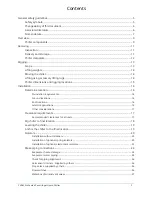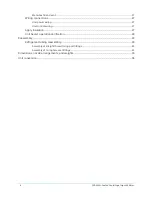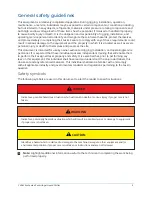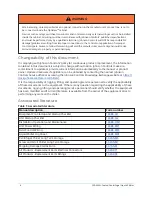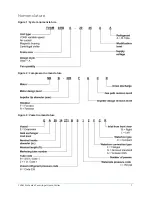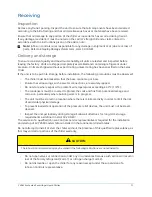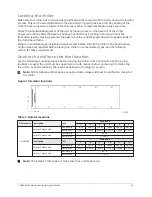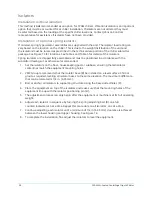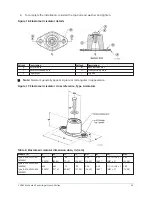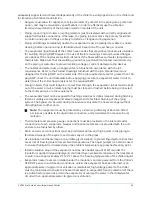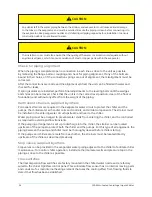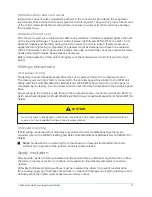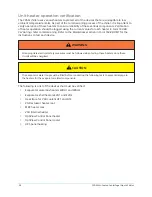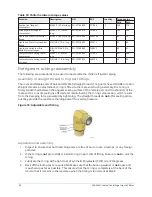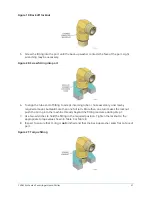
Installation
Determine location
Read these instructions in their entirety before beginning the installation. For optimum
performance and trouble-free service, it is essential that the installation site meets the location and
space requirements for the model being installed.
Important:
Make sure that the minimum service access space is maintained for cleaning and
maintenance purposes.
The units are designed for outside installation and can be installed at ground level on a suitable
flat level foundation easily capable of supporting the weight of the unit, or on a suitable rooftop
location. In both cases, an adequate supply of air is required. Avoid locations where the sound
output and air discharge from the unit might be objectionable.
The location must be selected for minimum sun exposure and away from boiler flues and other
sources of airborne chemicals that could attack the condenser coils and steel parts of the unit.
If located in an area accessible to unauthorized persons, steps must be taken to prevent access
to the unit by means of a protective fence. This can help to prevent the possibility of vandalism,
accidental damage, or possible harm caused by unauthorized removal of protective guards or
opening panels to expose rotating or high voltage components.
Foundation requirements
Mount units on a flat and level foundation, ground or roof, that can support the entire operating
weight of the equipment. Contact your nearest Johnson Controls Sales Office for shipping and
operating weights.
Ground locations
For ground level locations, the unit must be installed on a suitable flat and level concrete base that
extends to fully support the two side channels of the unit base frame. A one-piece concrete slab
with footings that extend below the frost line is recommended.
The slab must not be tied to the main building foundation because operational noise can telegraph.
Mounting holes (5/8 in.) are provided in the base rails for bolting the unit to its foundation. See
Figure 13 for locations.
For ground installations, precautions must be taken to protect the unit from tampering by or injury
to unauthorized persons. Fasteners on access panels can prevent casual tampering. However,
further safety precautions such as unit enclosure options, a fenced-in enclosure, or locking devices
on the panels may be advisable. Check with local authorities for safety regulations.
Roof locations
Sufficient structure must be provided to safely support the entire operating weight of the unit,
service personnel, and service tooling. Do not damage the roof during installation. If the roof
is of bonded construction, consult a building contractor or architect for special installation
requirements. Use spring isolators to minimize vibration transmission into building structure.
The building must have adequate structural support (by others) at the spring isolator locations.
Typically this is region directly under the side and end base rails of the chiller.
Seismic applications
Avoid installing chillers on springs or roofs where earthquakes are a risk. Springs and roofs amplify
earthquake forces. Rigidly mounting chillers to ground level concrete pads is generally the best
option for earthquake zones. Contact Johnson Controls equipment specialists for help with projects
that have seismic requirements.
YVAM Air-Cooled Centrifugal Liquid Chiller
16


